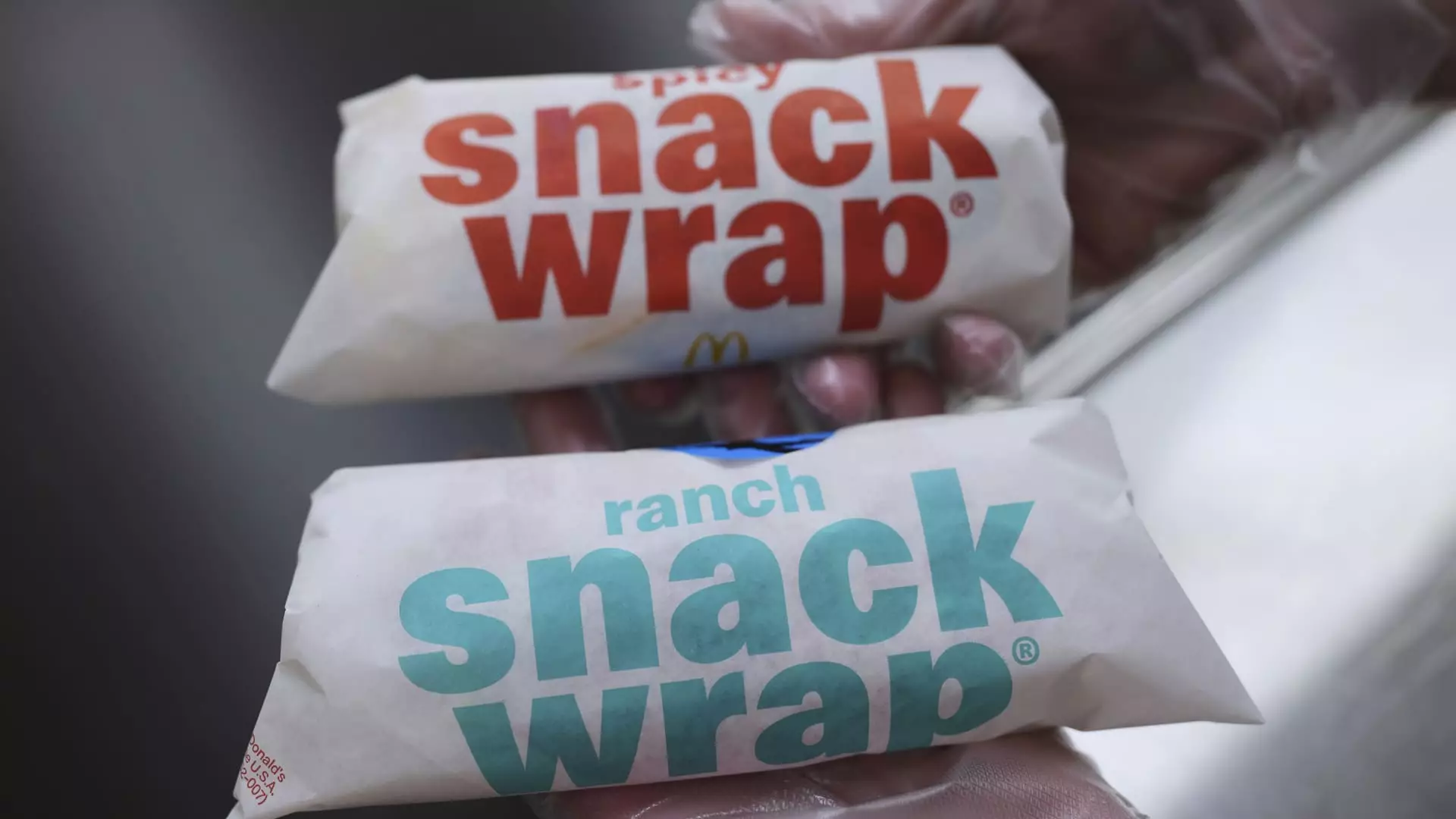The reintroduction of McDonald’s Snack Wraps is more than just a fleeting marketing stunt; it reveals a deeper layer of customer attachment and strategic insight. After nearly a decade of absence, the Snack Wrap’s return appears to resonate profoundly with loyal patrons and casual visitors alike. This isn’t merely about nostalgia—it’s about understanding what customers crave when they seek comfort, familiarity, and innovation all at once. In an era where quick-service chains often lean heavily on discounts and promotional gimmicks to stay afloat, McDonald’s decision to bring back a beloved item underscores a commitment to genuine engagement over superficial sales tactics.
The early data paints a clear picture: traffic surged impressively in the initial days, with some stores reporting out-of-stock lettuce due to overwhelming demand. This highlights an essential truth—when a brand taps into emotional resonance and authentic preferences, temporary setbacks like ingredient shortages are a small price to pay. McDonald’s is demonstrating that meaningful menu revisits can inspire a sense of community among customers, who see their favorite items not just as food but as part of their personal narrative. The large spike in sales and social buzz indicates that the Snack Wrap’s return isn’t just a marketing ploy; it’s a strategic move grounded in understanding customer psychology.
Beyond Promotions: Building Lasting Loyalty
In a market saturated with fleeting deals and limited-time offers, McDonald’s is showing that sustainable loyalty cannot be achieved solely through discounts. The remarkable statistic—90% of survey respondents intend to buy the Snack Wrap again—underscores that consumers value more than just low prices; they seek consistency, nostalgia, and taste. The chain’s ability to convert first-time buyers into repeat customers signifies a shift from transactional to relational marketing, which is crucial in maintaining long-term growth amid fluctuating economic conditions.
Furthermore, the data suggests that experienced McDonald’s diners are more likely to embrace the Snack Wrap than the average customer. This illustrates a paradox of brand loyalty: those already invested in the McDonald’s experience are most receptive to new or reintroduced menu items. It challenges the misconception that new items must constantly attract new customers instead of nurturing existing ones. McDonald’s is proving that deepening relationships within its current customer base can translate into sustained revenue, especially when the offering aligns with ingrained tastes and preferences.
The Power of a Purposeful Return in a Changing Market
The strategic reintroduction of the Snack Wrap is not merely about capitalizing on nostalgia; it’s a calculated move to reinforce McDonald’s relevance in a competitive landscape. As other chains struggle with sluggish sales and consumer fatigue over standard fast-food fare, McDonald’s leverages its history of innovation rooted in consumer insights. The decision to incorporate the Snack Wrap alongside the new McCrispy Strips further signifies a nuanced approach—merging familiar comfort with modern quality.
This move also signals confidence in the potential longevity of its menu offerings. Rather than relying on periodic promotions that temporarily spike sales, McDonald’s is betting on its ability to continuously adapt based on customer feedback. The popularity of flavors like ranch and spicy options indicates a keen understanding of current consumer preferences—favoring customization and bold tastes. Such strategic menu development demonstrates that McDonald’s does not merely chase trends but seeks to embed meaningful choices into its core offerings, fostering a stronger emotional bond with customers.
In essence, McDonald’s resurgence with the Snack Wraps exemplifies a shift in fast-food philosophy—one that values authenticity over artificial hype, relationship over transaction, and consumer insight over short-term gains. This approach can serve as a blueprint for other chains striving to navigate a rapidly evolving industry landscape while remaining true to the very customers they aim to serve.



Leave a Reply